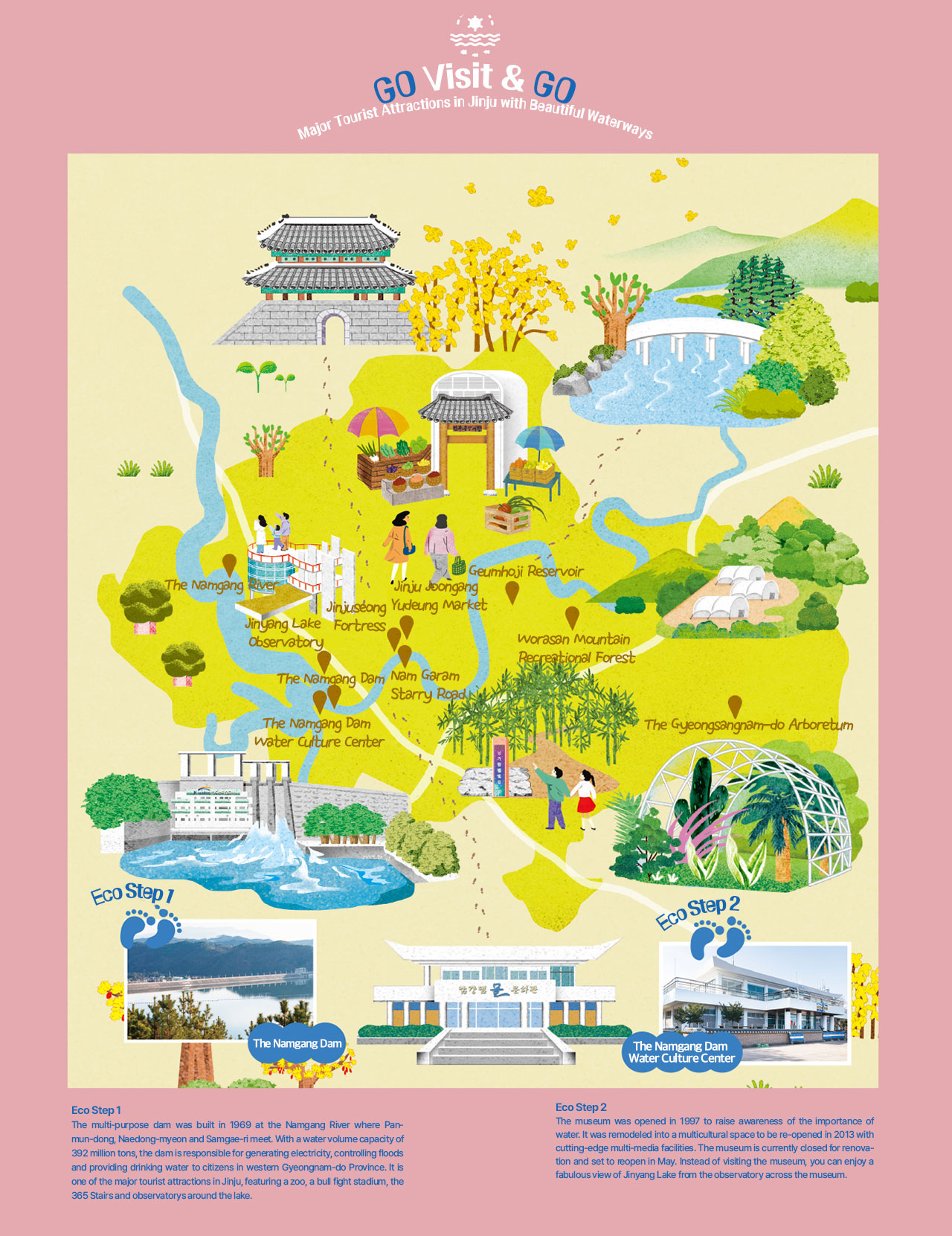-
 2023. March VOL. 660
2023. March VOL. 660
A city through which a river flows is a charming sight. Jinju is one of the cities with the Namgang River flowing through the city’s heart with an ‘S’ shape. The river serves as dividing lines and buffer zones, and runs through the city, slowing down the pace of life in the city that is otherwise hectic all the time. The river makes people who walk along or watch the river take a moment of pause to feel relaxed. Jinju citizens are blessed to enjoy the river’s landscape that constantly changes throughout the four seasons, as part of their daily life.
Generally, a river originates from a source and flows into a stream or river before it eventually meets the sea. In the process, it joins other waterways and goes through numerous changes in its name and shape. The Namgang River is no exception, originating from Namdeogyusan Mountain(1,507m) in Seosang-myeon, Hamyang-gun, Gyeongsangnam-do Province and running into the Namgae-cheon Stream. It is called the ‘Gyeonghogang River’ in Sancheong-gun, and then turns briefly into ‘Jinyangho Lake’ when it reaches the Namgang Dam before it finally forms into the Namgang River as it arrives in Jinju City. In this way, the water travels as long as 186.3km to the city where it turns into the aptly named ‘River of Lights’ on which countless oil lanterns float during the Jinju Yudeung Lantern Festival. The river is also known as the ‘River of Non Gae’ as a symbol of patriotism and martyrdom.
Water in itself is shapeless and colorless, with the color and the sense of depth of water in flux given the surrounding colors and the direction of sunlight. The forests surrounding Jinynag Lake are green throughout the season because they consist mainly of coniferous trees. The Namgang River that runs leisurely through the city absorbs all the lights of the city and creates complicated shadows. The Namgang River’s water route originating from South Deogyu Mountain and the Deokcheon River’s water route flowing from Jiri Mountain meet to form a lake and eventually become the Namgang River. The water is pristine and clear being sourced from a big mountain, and the water quality has become even better after the Namgang Dam was built. The river is a source of drinking water not only for the city of Jinju but also the broader area of Western Gyeongnam-do Province. It is also home to otters, shiri (slender shinners), coreoperca herzi and Chinese minnows, all of which are known to live only in pristine waters.


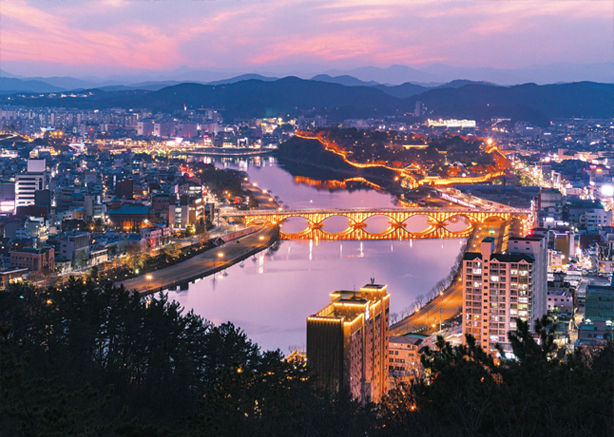

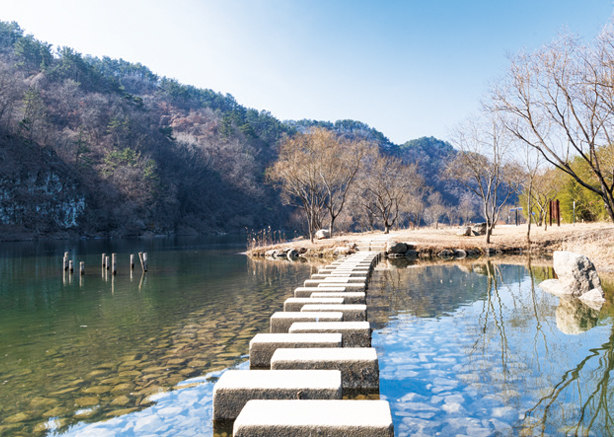
People say, ‘The Namgang River is Jinju’s No. 1 landmark’, which indicates how closely connected the city and the river are. The history of Jinju’s growth as a center of culture·commerce·education has centered around the river as the main transportation route. Even today, people in Jinju depend heavily on the river as one of the city’s primary resources. With a deep affectionate for the river, citizens of Jinju unanimously vote for the Namgang River as ‘the all-time best landscape that represents Jinju’. The river has stories harking back a thousand years in history. Major historic sites located along the river include Jinjuseong Fortress with a long history of patriotism and Bongsudae(in Mangjinsan Mountain) that served as a traditional smoke-signal communication system for hundreds of years.
My first destination is Jinjuseong Fortress, which is known as the place where the national patriot Non Gae embraced a Japanese general and jumped off the cliff together into the water. It is also the field for one of the three major battles during the Imjin War or the Japanese Invasion of Korea in 1592, known as the Jinju Battle. By winning the battle, General Si-min Kim stopped the Japanese troops from reaching the Honam area, regrouping and turning the tide of war in favor of Korea. In the end, there were over 70,000 soldiers and civilians killed while fighting for the country at the second Jiju Battle that took place just 8 months later, and the fortress was eventually seized by the Japanese.
Non Gae was called to a party to entertain victorious Japanese generals. At the party held in Chokseoknu at Jinjuseong Fortress, she warmly embraced a Japanese general, then clasped her fingers with rings that locked her arms around him, and cast herself and the general into the river, killing them both. Sometimes, a sacrifice and tragedy are warranted in the fight for a cause. Much of what we take for granted today has been made possible through a history of tragedy and sacrifice. As you walk along the Jinjuseong Fortress walls, which stretch 1.7m, you will find the colors of spring that emerges and the traces of sacred wrath by those who sacrificed themselves as they fought for the country.
A landscape needs to be viewed both from macro and micro perspectives. There are many spots along the river from which you can look down onto the downtown area of Jinju.
Bongsudae in Mangjinsan Mountain, the observatory at Seonhaksan Mountain and Yudeung Theme Park on Somangjin Mountain are some of the places that allow you to take a macro view of the Namgang River. Of these places, the observatory on Seonhaksan Mountain is the best spot to view the river and Jinjuseong Fortress built close to the river.
The mountain is only 135.5m above sea level and you can get to the observatory if you ascend only about 750m. From there, you can enjoy a far-reaching bird’s eye view of the city. There are also some places where you can experience the river up close and personal. At the wetland area located below the Namgang Dam, you can view a fascinating landscape that combines the river and weeping willows leaves which are changing to grow light green. If you walk about 5km along the river banks walking path to Jinjuseong Fortress, you will be able to feel the warmth of early spring, which is often taken for granted in the downtown area. The view is peaceful and quiet, making it a great place to relax and restore your calm and inner peace.
Walking up to the upper region of the Namgang River will lead you to Jinyang Lake. The lake, which was created as a result of the construction of the Namgang Dam in 1969 boasts a gorgeous landscape. Particularly, the sunset and the profile of Jiri Mountain seen from a long distance are stunning. After going for a drive along the lake that winds and meanders around, go up to the observatory in Jinyangho Lake Park at sunset hours, where your gaze will meet the enchanting colors created by the combination of the radiant evening sky and the deep darkness that settles on the blue water of the lake. Around early April, cherry blossoms make the landscape even more beautiful. As someone once described, the colorful nightscape of Jinjuseong Fortress seen from Namgaram Park(located opposite the Jinjuseong fortress) is quite different from the starry nightscape of the river basin viewed from the observatory on Seonhaksan Mountain. The nightscapes are truly worth a view.
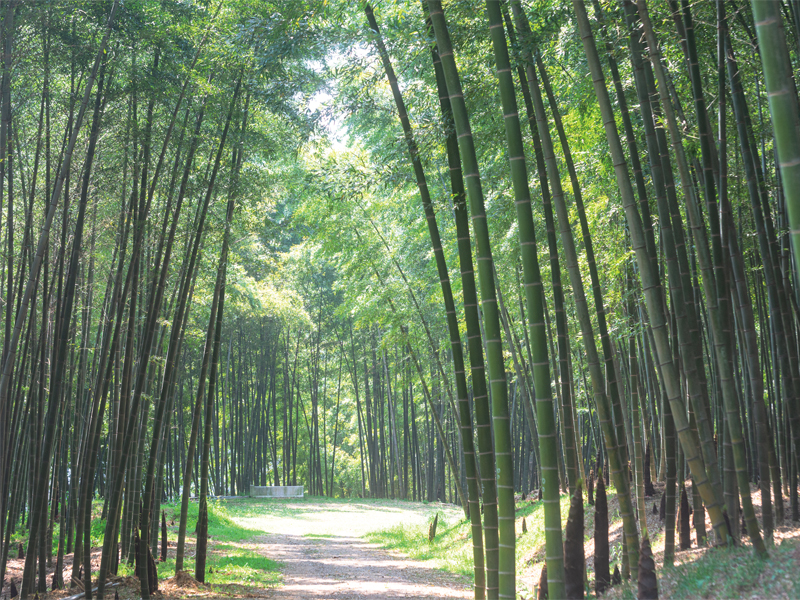
The bamboo forest on Gajwa Mountain is a great destination where you can hike. The South Forest Research Center of the Korea Forest Service used to run experimental forests for research purposes in the mountain. So, the forests offer great landscapes that change from season to season. Imagine walking through a dense forest of tall bamboo trees and listening to the sounds of rustling bamboo leaves with winds blowing through the forest. The enticing green color of bamboo leaves invites you to slow down your pace and cherish the forest as long as you can. From the starting point of the walking trail, the forest features different themed sections including Chungpoong-gil, the Bamboo Forest Trail, the Eo-ullim Forest Trail, Mulsori Resting Area, the Bare Foot Red Clay Trail, Punggyeong-gil(observatory) and the Bracken Forest Trail.
![]() Address 15-32, Jinju-daero 629beon-gil, Jinju-si, Gyeongsangnam-do
Address 15-32, Jinju-daero 629beon-gil, Jinju-si, Gyeongsangnam-do
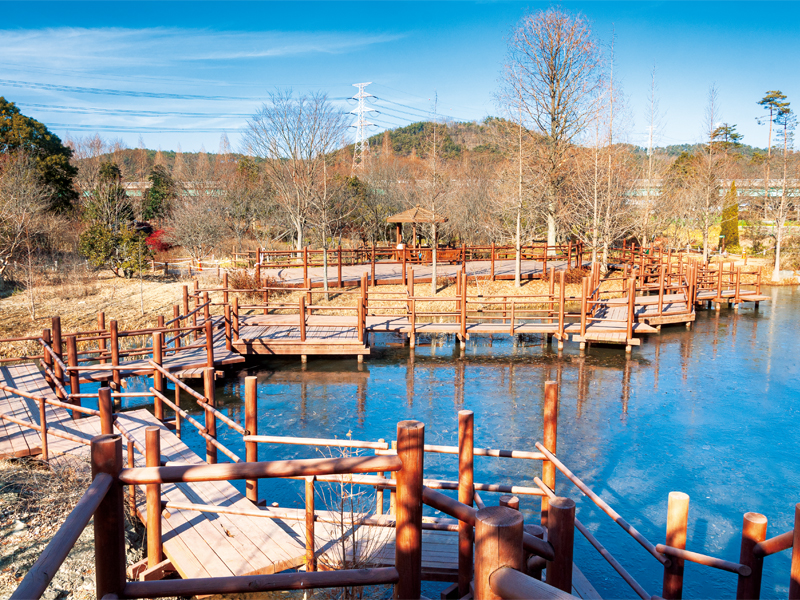
If you feel the arrival of spring ahead of others, this is the place you want to visit. A wide variety of plant species grows on a vast area of land at the arboretum. The most recommended walking route begins from the ticket office and leads to the Forest Museum, the Tropical Botanic Garden, Sub-Tropical Botanic Garden, Cactus Garden, Medicinal Herbs Garden, the Wild Animals Observatory, the Ecological Greenhouse, the water fountain, the Wood Species Identification Center, the Information Center, and the Flower Garden. The two-hour route circles around the arboretum and brings you back to the ticket office. Particularly, the Sub-Tropical Botanic Garden that emanating the fragrance of daphnes and the Flower Garden where apricot flowers bloom are must-visit places worth a visit in spring. The metasequoia path on the right of the Information Center and the adjacent pond are popular spots for visitors to take photos to be uploaded on social media.
![]() Address 386, Sumogwon-ro, Ibanseong-myeon, Jinju-si, Gyeongsangnam-do
Address 386, Sumogwon-ro, Ibanseong-myeon, Jinju-si, Gyeongsangnam-do
![]() Tel 055-254-3811
Tel 055-254-3811
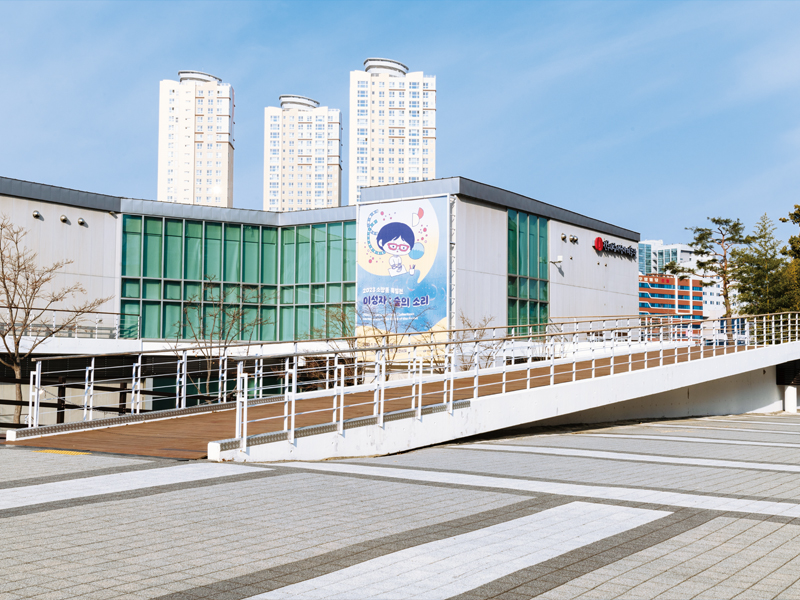
The museum is dedicated to the works by the late Rhee Seund Ja, a Jinju native who is a world-class Western-style artist and print artist. Rhee is known for blurring the lines between Western and Eastern styles, based on his profound inspirations, setting the trends of contemporary art in S. Korea. Though small in scale, the museum is worth a visit as the abstract paintings in bright yet subtle colors blend nicely with the peaceful landscape of the museum. You can freely bask in the spring sunlight around the outdoor space of the museum that is designed like a little park, while watching the Yeongcheon River flowing gently behind the museum.
![]() Address 14, Ena-ro 128beon-gil, Jinju-si, Gyeongsangnam-do
Address 14, Ena-ro 128beon-gil, Jinju-si, Gyeongsangnam-do
![]() Tel 055-749-3661
Tel 055-749-3661
